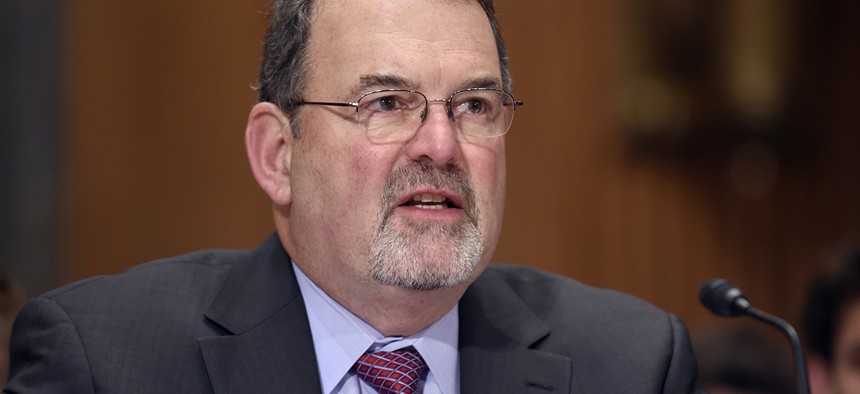Inefficient Federal IT Like Paying 400 IT Specialists to Maintain a Single iPad

Federal CIO Tony Scott Susan Walsh/AP
“We're paying a lot of money for fixed capacity that we invested in 10, 20 years ago,” U.S. CIO Tony Scott says. “Call it crazy, I think it's time to bring an end to this."
Federal Chief Information Officer Tony Scott has a new weapon in his pitch for an alternative funding stream for upgrading legacy IT systems in government: basic math.
The government's default mode when it comes technology upgrades -- neglecting to adopt more modern systems and continuing to pay costly maintenance fees on old equipment -- is equivalent to paying 400 IT specialists to manage a single iPad, Scott contends.
That’s part of a “mental math” exercise Scott provided during a presentation today at the Cloud Security Alliance in Washington, D.C.
Now, here’s the show-your-work part of the equation.
For every $1,000 the government, or any large organization, spends on technology, roughly $150 of that goes to maintenance each year in support contacts, license fees and other types of upkeep, Scott calculated.
The problem is the rapid pace of technology. Every two years, basically, computing power doubles. For that same $1,000, agencies could buy technology and gear twice as powerful.
Instead, “We're paying a lot of money for fixed capacity that we invested in 10, 20 years ago,” Scott said. “Call it crazy, I think it's time to bring an end to this."
For now, many agencies are stuck paying sometimes exorbitant costs to maintain old tech that often lacks as much computing power as a typical Apple device.
“Now, can you imagine me throwing an iPad on the table and saying to anybody in business today, 'Yeah, it's a great device, but we need about 400 people to support it?” Scott said.
» Get the best federal technology news and ideas delivered right to your inbox. Sign up here.
As one of the government’s top tech officials, Scott, a former corporate CIO who joined the Obama administration in February 2015, has championed the creation of an “IT modernization fund.”
The one-time $3.1 billion proposal, which requires congressional approval, would be used by agencies as seed funding to begin upgrading some of their so-called legacy systems. Agencies would be required to pay back into the fund as they deliver capability, which Scott called a “crucial” part of the proposal.
“Unlike the one-time money -- the get-it-and-forget-it kind of thing that happens today -- this will make sure that there's management focus ... for the duration of the project, because they'll have to pay the funds back,” Scott said.
Scott, along with a board of six other government experts, will oversee the fund and, ultimately, select agency projects.
Scott said he sees the fund as a crucial step in tweaking the way the federal government budgets IT spending.
Early on in discussions about the creation of the IT fund, some proposed taking a thin slice of funding from all the programs in an agency’s budget to pay for IT upgrades -- akin to the cigarette taxes states and cities have used to fill their coffers.
"My response to that is, ‘Do you want to ignite a war in Congress?’” Scott said. “Every single one of these programs has somebody who's a fan. You go try to take money out of their program. Good luck with that.”
So far, the IT modernization fund seems to have divided members of Congress.
Rep. Steny Hoyer introduced legislation last month that would formally establish the fund, calling the proposal “a major step” in transforming the way the government invests in technology.
But some Republican lawmakers have pounced on the idea as seemingly another example of profligate government spending. Rep. Jason Chaffetz, the chairman of the House Oversight and Government Reform Committee, noted the government has spent $525 billion on IT since 2009 and called the rationale for the fund “hogwash.”
Overall, Scott said he’s received bipartisan support for the proposal.
NEXT STORY: New details on IC's insider threat patrol





